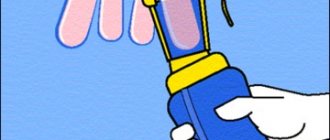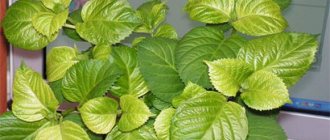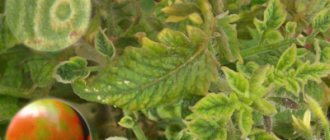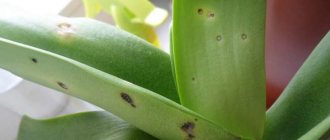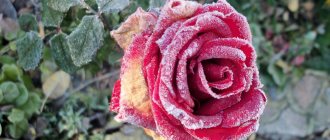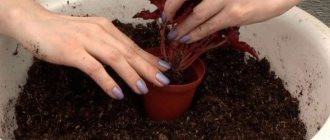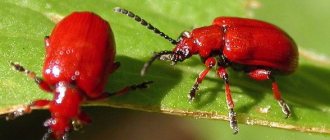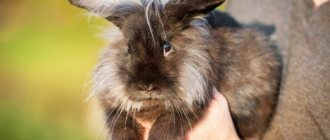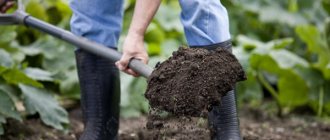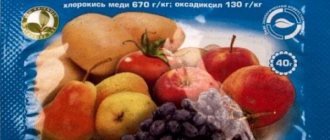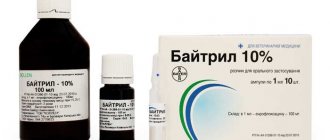Home Diseases and pests
Timely control of diseases and pests of honeysuckle allows you to grow a healthy crop, used both for decorative purposes and to produce aromatic berries. Currently, various diseases and pests of honeysuckle are widespread, this is due to the high degree of popularity of the culture. Most often, infections are introduced into the garden plot with planting material. Especially in cases where seedlings of edible and decorative honeysuckle are purchased in unverified places. If the planting site is chosen incorrectly, edible honeysuckle is affected by diseases and pests inherent in other fruit and berry crops grown on the site. The fight against them is quite difficult from an agrotechnical point of view. Therefore, the most important rule is to follow the recommendations of agronomists when planting and caring for them.
- 2 Diseases of ornamental honeysuckle leaves: care and treatment methods
- 3 Fungal diseases of honeysuckle and their treatment (with photo)
- 4 Diseases of honeysuckle honeysuckle and their treatment
- 5 Viral diseases of edible honeysuckle and their treatment
- 6 Pests of honeysuckle and their control
- 7 Pests of edible honeysuckle (with photo)
Honeysuckle diseases and their control (with photo)
Look at what diseases and pests affect honeysuckle - the photo of the symptoms shows all the characteristic signs, if detected, you must immediately begin treatment with chemicals:
Powdery mildew is a common infection on these shrubs. The fight against fungal diseases of honeysuckle is not difficult if you use modern types of fungicides.
The causative agents are the fungi Microsphaera lonicerae Wint. and Phyllactinia suffulta Sacc. The first fungus causes the formation of a white felt coating on both sides of young leaves and shoots, and the second - only on the underside of the leaf blades. Pinpoint black fruiting bodies form in the affected tissue, leaves turn brown and dry out prematurely, and shoots become deformed. Due to premature leaf fall, the wood of the shoots ripens worse, which greatly reduces the frost resistance of the shrub. The infection persists in the bark of affected shoots and in affected plant debris.
Control measures. Compliance with all requirements of agricultural technology for growing crops, collecting and removing plant residues, pruning affected dried shoots. Spraying the bushes at the first symptoms of the disease with one of the drugs: skor, rayok, pureflower, thiovit Jet.
Look at these honeysuckle diseases and the fight against them in the photo, which illustrates signs of infection and agrotechnical measures for treating bushes:
Diseases of Tatar honeysuckle
Tatar honeysuckle is one of the most common in parks and squares due to its high decorativeness and unpretentiousness. Its fruits are inedible, moreover, they are poisonous. The plant is susceptible to fungal disease in damp and warm weather. Powdery mildew is considered especially dangerous, the signs of which are a white coating and brown spots on branches and leaves. Damaged parts of the bush must be trimmed and burned, then the plant must be treated with Ordan and Topaz. It is recommended to spray them several times during the season, with different preparations in turn.
When attacked by different types of aphids, Tatarian honeysuckle leaves and shoot tips curl. Means of combating aphids are spraying with Aktara during the season and Aktellik before buds open.
Another disease - cercospora - is characterized by the appearance of gray spots with a burgundy border. It is treated with Bordeaux mixture, Fundazol, and a solution of copper sulfate and soap.
Now you know everything about honeysuckle diseases and how to fight them, which means you are armed and able to achieve a good harvest. The main thing is to remember that plants, like people, need care, attention and love. We wish you a good harvest.
Diseases of decorative honeysuckle leaves: care and treatment methods
Caring for honeysuckle during illness involves removing all affected parts and treating it with chemicals. The most common diseases of decorative honeysuckle are spots, which completely deprive the shrub of its visual appeal.
Ascochyta blotch of honeysuckle.
The causative agent of this disease of honeysuckle leaves is the fungus Ascochyta tenerrima Sacc. et Room. Blackish-gray, irregularly shaped spots appear on the leaves, often located at the edge of the leaf blade. In the center of the spot, the spots gradually lighten and numerous pinpoint black fruiting bodies—pycnidia—are formed in the necrotic tissue. Affected leaves dry out and fall off prematurely, which greatly reduces the frost resistance of plants. The infection persists in the affected plant debris.
Control measures. Collection and removal of plant residues. Preventive spraying of bushes in the spring, immediately after flowering, with 1% Bordeaux mixture or its substitutes (HOM, Abiga-Peak). If spotting is very widespread, spraying is repeated in the summer, after picking berries, with the same preparations.
How to process honeysuckle after harvesting
After harvesting, honeysuckle is prepared for winter - the bush is pruned and the plant is sprayed. Such agrotechnical measures help to avoid the appearance of diseases and pests next year.
Pruning honeysuckle
Preparations for winter begin in early August . A few weeks before this, reduce the amount of watering. This is done in order to slow down the growth of the plant and not awaken new buds.
In the period from August 20 to September 10, pruning is carried out - the basal shoots and branches that grow inside the bush are removed. The top of the plant should not be wider than its root zone. Otherwise, the bush may break due to strong winds. The crown should taper towards the top.
For pruning, use a convenient garden pruner. To prevent parasites and mold, the cut is made even. Summer residents smear it with paint or clay to protect it from diseases and pests. After pruning, the honeysuckle is watered abundantly for several days - the moisture restores the plant.
What to spray
Treatment prepares the plant for winter and protects it from insects and pests. Foliar feeding strengthens the immune system and ensures a bountiful harvest.
How to spray honeysuckle against pests and diseases in the fall:
- urea solution - 700 g of substance is required for 10 liters of water;
- solution based on tobacco and pepper - 5 liters of hot water, 500 g of tobacco and 300 g of ground pepper;
- iodine solution - add 10 drops of iodine to 10 liters of water;
- the drug "Rogor-S" - protects against sucking insects, is effective for 21 days.
Fungal diseases of honeysuckle and their treatment (with photo)
Fungal diseases of honeysuckle lead to the death of the bush within 1-2 seasons. Therefore, it is important to know all the necessary information about honeysuckle diseases and their treatment, which will allow you to begin to act without delay.
Brown spot of honeysuckle.
The causative agent is the fungus Ramularia lonicerae Vogl. The spots on the leaves are brownish-brown, irregular in shape, often merging, sometimes limited to leaf veins. At high humidity, a weak whitish coating of sporulation develops on the necrotic tissue on the underside of the leaf blade. The leaves turn brown and fall off prematurely. The infection persists in the affected plant debris.
Look at the signs of this honeysuckle disease in the photo, where you can see the most characteristic clinical manifestations of the infection:
Control measures. The same as against ascochyta blotch.
Light gray spotting of honeysuckle.
The causative agent is the fungus Septoria xylostei Sacc. et Wint. The spots on the leaves are numerous, round, on both sides of the leaf blade, gray in color and surrounded by a black border. Over time, numerous pinpoint black fruiting bodies—pycnidia—are formed on the upper side of the necrotic tissue. Affected leaves turn brown and fall off prematurely. The infection persists in the affected plant debris.
Control measures. The same as against ascochyta blotch.
How does ramulariasis affect honeysuckle?
The fungal disease ramulariasis begins with infection of young leaves. Spots of various shapes appear on them, brown in color with browning in the middle. Over time, they increase in size and completely capture the leaf, moving to the stem and pericarp. Metabolism is disrupted, roots weaken. After ripening, the spores fall off and spread further throughout the plant. The fungus overwinters in the soil and continues its work again in the spring. To prevent the disease, honeysuckle is treated in the spring with a 1% solution of soap and copper sulfate.
Ramularia on honeysuckle
The following measures are taken for diseased plants:
- Leaves affected by the fungus are removed and burned;
- Fallen leaves are removed.
Diseases of honeysuckle honeysuckle and their treatment
We propose to consider diseases of honeysuckle honeysuckle and their treatment with the help of special-purpose chemicals. Fungal diseases of honeysuckle honeysuckle are more common; like other representatives of this genus, the shrub is susceptible to infection in the cold and damp season.
Be sure to study all honeysuckle diseases and their treatment, and the photos offered further on the page will help you identify fungal infections at first glance:
Reddish-olive honeysuckle spot.
The causative agent is the fungus Phyllosticta lonicerae Westend. Reddish-olive, gradually turning brown, blurry spots with a darker border appear on the leaves on both sides. Pointed black fruiting bodies—pycnidia—are formed on the upper side. Honeysuckle honeysuckle leaves turn brown and dry out temporarily. The infection is stored in the affected plant debris.
Control measures. The same as against ascochyta blotch.
How to treat honeysuckle against pests and diseases in spring
Different pests and fungal diseases of honeysuckle manifest themselves at different times. Some diseases begin to develop with the arrival of warmer weather, while the symptoms of others appear only in mid- or late summer.
To protect honeysuckle from pests and diseases, it is customary to carry out annual preventive treatment. It is carried out in the spring, at a time when stable temperatures above 5 ° C have established, but the buds have not yet begun to bloom. Typically, several sprayings are carried out throughout the spring and summer, this eliminates the larvae of most pests and fungal spores:
- It is allowed to spray honeysuckle with any garden insecticides and fungicides. The most proven products are Actellik, Fundazol, Bordeaux mixture and copper sulfate, Aktara and others.
- If honeysuckle is slightly damaged by pests, you can also use home remedies, for example, a regular soap solution.
- It should be taken into account that if the lesion is advanced, folk remedies may not bring results.
After the first preventive spraying in early spring, it is recommended to repeat the procedure 2 or 3 more times to achieve maximum results. It should be borne in mind that honeysuckle cannot be sprayed directly during flowering; chemicals can disrupt the pollination process.
You can spray bushes not only with chemicals, but also with boiling water
Some gardeners also treat honeysuckle with boiling water in the spring. It is performed immediately after the snow melts and before the buds open; the roots of the bush are covered with dense material, and the above-ground part of the bush is doused with hot water. This treatment eliminates most of the larvae and fungal spores in the bark.
To protect honeysuckle from diseases and pests, it is important to carefully monitor the sanitary condition of the garden. Every spring, the honeysuckle bush is inspected for damage and dry, broken, and twisted branches are promptly removed. If the bush is dense and there are diseased shoots, the likelihood of developing fungal diseases increases greatly.
Important! Every autumn, it is necessary to thoroughly clean the garden and completely remove all fallen leaves, broken branches and other plant debris from the ground. Insect larvae and fungal spores overwinter in plant debris in the tree trunk circle.
Viral diseases of edible honeysuckle and their treatment
Reddish-olive honeysuckle spot.
Arabis mosaic virus (AMV) (syn. Raspberry yellow dwarf virus) is a disease common on many berry and ornamental plants. The symptoms of this disease of edible honeysuckle are very varied - from yellow mottling, wrinkling to yellowing of the veins and bushiness of young plants. Bushiness is manifested by a sharp shortening of internodes, the awakening of axillary buds, and the growth of numerous lateral shoots. The leaves remain underdeveloped, the bushes become smaller and gradually dry out. The virus is spread by nematodes and with infected planting material.
Control measures. Compliance with all requirements of agricultural cultivation technology, use of high-quality planting material, timely removal and burning of individual shoots and affected bushes.
There are other viral diseases of edible honeysuckle, but their treatment in general is carried out in the same way.
Why does honeysuckle dry out with ramularia?
Sometimes drying out, first of individual sections of the leaves, and then of the entire foliage, is a consequence of the activity of fungi belonging to the Ramularia family.
Visually, such marks on the foliage of the affected plant look like yellow-brown or brown spots with a dark rim. The shape of the spots can be either round or irregular. Moreover, over time they grow, and the area affected by honeysuckle disease, such as ramularia or spotting, expands. Ripe spores in the form of white powder fall off several times during the growing season from places where the fungus accumulates and are scattered on the root litter and healthy leaves. See honeysuckle honeysuckle photo.
The danger of the disease lies not only in the fact that the honeysuckle crown dries out and the plant weakens, but also in the ability of the spores to overwinter in the middle zone and spread again in the spring. Therefore, as safety measures:
- carefully remove the affected shoots;
- collect fallen old leaves;
- All parts of plants infected with fungus are burned.
Treating the bushes with fungicides, as well as copper sulfate, Bordeaux mixture or other copper-containing preparations will help protect the plant from edible honeysuckle disease of fungal origin.
Honeysuckle pests and their control
An urgent topic for any gardener is honeysuckle pests and their control using effective, but safe for the garden, means. We'll talk about this later in the article.
Common spider mite Tetranychus urticae Koch. - very small pests of honeysuckle that feed on the sap of young plant tissues. They have 4 pairs of legs. The body is 0.25-0.43 mm long, oval, greenish-yellow or orange-red. Females overwinter under plant debris and under the bark of trees and shrubs. In the spring, young leaves colonize, feed, weave thin webs and lay eggs. The larvae of each generation, depending on weather conditions, develop from 8 to 20 days. During the growing season, more than 10 generations of the pest develop in open ground. Damaged leaves turn yellow, become deformed, turn brown and dry out. In most cases, the mite spreads from nurseries with planting material, as well as with various cut flowers and potted indoor plants. This pest damages over 200 species of various plants, including honeysuckle.
Control measures. Spraying plants when a pest appears with one of the preparations: fitoverm, fufanon, kemifos, actellik, lightning.
Apical honeysuckle aphid.
Honeysuckle aphid Hayhurstia tataricum Aizenb. - a small sucking insect of olive green color. It feeds on the juice of young leaves at the ends of the shoots. Damaged leaves become deformed, fold upward, turn yellow and dry out.
Control measures. Trimming and burning single tips of shoots with aphid colonies. Spraying the bushes immediately after flowering and in large numbers in the summer, after picking berries, with one of the preparations: Fitoverm, Fufanon, Kemifos, Kinmiks, Actellik, Iskra, Inta-Vir.
Cereal-honeysuckle aphid.
Honeysuckle aphid Rhopalosiphoninus lonicerae Sieb. - a small insect of light yellow color, feeds on the juice of tissues. Aphids suck sap from the underside of leaves, the edges of which curl down. Yellow necrotic spots appear on the upper side of the leaf, which turn brown and dry out, but a yellow halo always remains. When the pest population is large, the leaves dry out prematurely.
Measures, struggle. The same as against the honeysuckle aphid.
Red-legged shieldweed.
Red-legged stink bug Penatoma rufipes L. - a large bug with a body length of 13-17 mm. The color above is brown with a bronze tint with frequent black dots, and below is rusty-red with black dots. The antennae, the middle part of the notch of the anterior margin of the pronotum, the tip of the scutellum and the legs are orange, the last 2 antennal segments are blackish, the ventral rim above is black with red-yellow stripes. Adult bedbugs and their larvae feed on the sap of the tissues of deciduous trees and shrubs.
Control measures. Preventive spraying of shrubs in the spring, before flowering or immediately after it, with one of the preparations: Fufanon, Kemifos, Kinmiks, Actellik, caviar, Inta-Vir. If the pest population is large, repeated spraying is carried out in the summer with the same preparations.
Narrow-bodied honeysuckle.
Narrow-bodied honeysuckle borer Agrilus coeruleus Rossi . - a shiny green beetle with a body 7-8 mm long. The larvae are white, legless, almost cylindrical in shape, and have 2 horn-like processes at the posterior end of the body. The beetles fly at the end of May - June, feeding on honeysuckle bushes, gnawing leaves from the edges. After fertilization, females lay eggs on shoots and leaf petioles. The hatched larvae bite into the shoots and eat away the ringing and longitudinally sinuous passages under the bark, filling them with dark brown excrement. Before autumn, the larvae finish feeding, overwinter in damaged shoots and pupate there in the spring. Shoots damaged by the borer gradually dry out.
Control measures. Annual preventive spraying of bushes in the spring, before flowering and immediately after it, with fufanon or its analogues.
Honeysuckle barbel.
Honeysuckle beetle Oberea pupillata Gyllh. - a large beetle with a body 20 mm long and long antennae. The beetle is brown-yellow, the elytra are gray-black. The larva is white-yellow, lives and feeds inside honeysuckle shoots, eating out the middle. Damaged shoots gradually dry out, and woody shoots show holes left after the beetles emerge. During additional feeding, adult beetles damage the leaves by roughly gnawing off the leaf blades.
Control measures. Timely pruning and burning of drying branches with larvae. Annual preventive spraying of bushes in the spring, before or after flowering, with fufanon or its analogues. On lignified shoots, additional injections are made into the holes with a solution of the drug Fufanon. Single beetles are collected and destroyed.
Rodent control: voles, hares
In addition to various insects and fungi that can annoy honeysuckle, larger representatives of the fauna can harm and even destroy the bush. Controlling rodents in some areas of the country is no less important than controlling the smallest insects. The main pests are hares and voles, which breed in large numbers. During the cold season, they search for food en masse and are not averse to nibbling on honeysuckle.
Did you know? Only a few types of honeysuckle are edible. The most famous inedible species of this plant is familiar to everyone since childhood and is called “wolf berry.”
How to scare away honeysuckle
To get rid of rodent infestations, the following methods are used:
- preventive;
- physical;
- chemical.
Prevention. The absence of fallen leaves and dry tops is already a big plus. And if the site is surrounded by a high fine-mesh fence, then hares will not be able to enter the planting area. The presence of hedgehogs or feral cats in the immediate area will also help repel rodents.
Scatterings of wood ash or peat will not appeal to hares, mice or rats.
Physical methods represent mechanical protection of trunks from omnivorous rodents. A variety of materials are used to tie the trunks: coniferous spruce branches, raspberry shoots, juniper or hawthorn branches, reeds, sunflower stems. Tying with agricultural mesh or fine metal mesh is effective. Previously, roofing felt was actively used, but when it was wrapped around the trunk, it stuck and the trunk did not breathe.
Chemical solutions that can be used to coat the trunk cause controversy among gardeners about the need and benefits of their use. But various mixtures of clay, manure, and “ Carbophosphorus ”, when applied to the trunk, discourage those who like to feast on wood in the cold season.
Correcting the consequences of nibbling plants
Large ring damage to the trunk will most likely lead to the death of the bush. But with smaller deformations, the health of the plant is worth fighting for if it is restored correctly. If there is a gnaw on half of the bark ring, the bridge rootstock method is used. To do this, cuttings are cut from another plant, inserted under the bark below and above the damaged area, and tied tightly. This method will allow the sap flow to be restored through the rootstocks, and the bush will be able to fully develop.
It is enough to carefully monitor the appearance of the plant, observe the conditions of cultivation, watering and fertilizing.
Honeysuckle is a fairly unpretentious plant. But if the bush gets sick or is infested with pests, you need to start fighting for its health as soon as possible.
Pests of edible honeysuckle (with photo)
Pests of edible honeysuckle damage all parts of the bush. But they cause the main damage to inflorescences, buds and ripening fruits.
Banded honeysuckle sawfly.
Striped honeysuckle sawfly Zaraea fasciata L. - an insect with complete metamorphosis. It has two pairs of membranous wings with clearly visible venation and a wide dark brown band.
An adult insect is 9-11 mm long, the body is bronze-black, the chest is black, the first segment of the abdomen is yellow-white, the legs are black with a faint bronze sheen. The false caterpillar is 20-22 mm long, cylindrical, gray-green, has 3 pairs of thoracic and 8 pairs of abdominal legs. There are 5 rows of black dots on the body, a black line above the spiracles, and a row of small yellowish spots below it. The head is brown-black. Damages ripening fruits.
False caterpillars of younger (I-II) instars are grayish-green, small, covered with a waxy coating and do not have black dots on their bodies. One generation develops per year. Adult caterpillars overwinter in cocoons in the soil and pupate there in the spring. In June, adult insects emerge and their flight continues until mid-July. Females lay eggs one at a time in the leaf tissue under the epidermis. Pseudo-caterpillars feed alone, roughly eating leaves, leaving only petioles. When there are a large number of false caterpillars on individual bushes, the leaves can be completely eaten away. The caterpillars continue feeding until the end of August, after which they leave the plants and make cocoons for wintering.
Control measures. Preventive spraying of shrubs in the spring before flowering or immediately after it with one of the preparations: Fufanon, Kemifos, Kinmiks, Actellik, caviar, Inta-Vir. Single caterpillars are collected and destroyed; if the pest population is large, repeated spraying is carried out in the summer with the same preparations.
Variable honeysuckle sawfly.
Variable honeysuckle sawfly Zaraeae mutica Thoms. - an insect 9-10 mm long. The wings are without a dark band, the body is bronze-green, the antennae are black, the legs and legs are yellow-white. Flight of adult insects is observed in May-June. False caterpillars are gray-white in color with 5 longitudinal rows of black and two rows of yellow spots, but above the spiracles there are only black strokes, not a stripe. False caterpillars roughly eat leaves and flower buds, leaving only petioles. Feeding continues from July until the end of August.
Control measures. The same as against the striped honeysuckle sawfly.
Honeysuckle sawfly.
Honeysuckle sawfly Abia lonicerae L. - an insect 10-12 mm long. The body is dark bronze, the legs and tarsi are yellow-white, the antennae are black. False caterpillars are bluish-gray with a lighter underside and sides, and the head is black. Along the back there is a row of black spots with a wide yellow (orange) border, bordered on the sides by large black spots, and in front and behind by a black transverse stripe. The sides of the segments have black spots, spots and dots. Pseudo-caterpillars roughly eat honeysuckle leaves and destroy the setting berries.
Control measures. The same as against the striped honeysuckle sawfly.
Gall midge leaf honeysuckle.
Leaf gall midge Dasyneura periclymeni Rubs. - a small two-winged insect 2-2.5 mm long, with delicate transparent wings, long legs and antennae. It flies in May; after fertilization, females lay eggs on young, budding leaves. The eggs hatch into white, legless, worm-like larvae, which subsequently become yellowish-red in color. The larvae suck the juice, as a result of which the edges of the leaves curl upward, thicken, forming dense yellowish and reddish ridges, inside of which there are several dozen larvae. The development of the insect lasts 30-40 days, and 3-4 generations develop during the year. When the pest population is high, the damaged leaves at the ends of the shoots are underdeveloped and curl along the central vein.
Control measures. Preventive spraying in the spring before flowering and immediately after it with one of the drugs: fufanon, kemifos, kinmiks, actellik, spark, Inta-Vir.
Biennial leaf roller.
Biennial leafroller Eupoecilia atbiguella Hb . - a small butterfly whose caterpillars often damage privet, honeysuckle and buckthorn. The caterpillar is 12-14 mm long, flesh-red in color, with a shiny black head, prothoracic shield and thoracic legs. The anal shield is brown. Each body segment has transverse rows of small hairy warts. The leaf roller damages flowers, young shoots and fruits. Flower buds, flowers, and later fruits of the caterpillar are entangled in a web and eaten away, they gnaw passages on shoots and branches and eat away the core, and the pulp and seeds of berries.
Control measures. Preventive spraying of trees and shrubs in the spring, before flowering or immediately after it, with one of the drugs: Fufanon, Kemifos, Kinmiks, Actellik, caviar, Inta-Vir.
Willow leaf roller.
Willow leaf roller Pandemis he-parana Den. et Schiff. - a butterfly with a wingspan of 24 mm in females and 16 mm in males. The forewings are red-brown, the bases of the wings and the middle band are darker, the hind wings are light gray. The caterpillar is green, with a yellow or pale green head. The pupa is light brown, 12-14 mm long. Oviposition is bright green. Caterpillars of the second instar overwinter in cobwebby cocoons under dry bud scales. In spring, at an average daily temperature of 15-17 ᵒC, caterpillars emerge from cocoons and begin to feed on buds and young leaves. Having finished feeding, they pupate. Mass flight of butterflies is observed in June. After fertilization, females lay eggs in ovipositions of 10-60 pieces, in total - up to 350 pieces. The hatched caterpillars glue two leaves together with a web or attach a leaf to a fruit, damaging both. The leaf roller damages many trees and shrubs.
Control measures. The same as against the biennial leaf roller.
Various leaf rollers.
Various leaf roller Choristoneura diversana Hb. - a small butterfly whose caterpillars, when feeding, roll several leaves into a longitudinal tube and feed inside, eating out large holes. The caterpillars are grayish-green in color with a reddish-brown head and small black warts on the chest and first abdominal segment. Feeds on young honeysuckle leaves in May-June. Distributed everywhere.
Control measures. The same as against the biennial leaf roller.
Grass leaf roller.
Grass leaf roller Zelotheres paleana Hb. - a small butterfly whose caterpillars, when feeding, roll several leaves into a longitudinal tube and feed inside, eating out large holes. The caterpillars are blackish with white spots, the head and occipital shield are black. Feeds on young honeysuckle leaves in May-June. Distributed everywhere.
Control measures. The same as against the biennial leaf roller.
The honeysuckle moth is inconspicuous.
Inconspicuous honeysuckle moth Epithectis mouffetella Schiff. - a small butterfly whose caterpillar feeds in rolled up leaves entwined with cobwebs. The caterpillar is very mobile, small, blackish-gray or dark olive-brown, with a white stripe on the back and white spots on the thoracic segments and sides, the head is black. Feeds on honeysuckle leaves in May-June.
Control measures. Spraying trees and shrubs during the period of bud swelling and immediately after flowering, with one of the preparations: fufanon, kemifos, kinmiks, actellik, spark, Inta-Vir.
Baby honeysuckle moth.
The baby honeysuckle moth Stigmella lonicerearum Frey is a very small butterfly with a wingspan of up to 5 mm. The wings are thin, narrow, lanceolate, framed by a fringe of their shiny long hairs. The head is covered with dense hairs, the first antennal segment is widened. The caterpillar is amber yellow, with a light brown head, flat, legless, and feeds on the parenchyma of leaves, making snake-like, double-sided mines on the top of the leaf with a narrow line of excrement. In September it feeds on honeysuckle leaves.
Control measures. Preventive spraying of bushes in the spring, before flowering and immediately after it, with one of the drugs: fufanon, kemifos, kinmiks, actellik, spark, Inta-Vir. If necessary, spraying is repeated at the end of summer with the same preparations.
Honeysuckle moth.
Honeysuckle moth Lithocolletis emberizaepenella Buch. - a very small butterfly with a wingspan of 10-12 mm. Fore wings with numerous light streaks. The caterpillars are green, up to 5 mm long, and feed in wide oval mines in the form of a light film. The mine is located on the underside of the leaf, and white spots are visible on the upper side. There can be one or more mines on one sheet. Damaged leaves become deformed and dry out. When the pest population is large, premature leaf fall occurs, which causes the shoots to ripen less well and the frost resistance of the bushes to decrease.
Control measures. The same as against the baby honeysuckle moth.
Autumn moth.
Autumn moth, or autumn moth Larentia autumnata Bkh. (syn. Oporinia au-tumnata Bkh.) , is a gray butterfly with thin, delicate, developed wings. Body length 12-13 mm, wingspan 36-38 mm. The forewings are silvery-gray with numerous transverse wavy lines. The hind wings are ash-gray, lighter, with a faint transverse wavy line and clear dark longitudinal veins. The antennae are thin and long. The caterpillar is bright green, velvety, 25-30 mm long, lives and feeds in young leaves rolled up and held together by a web, which it gnaws at the edges. After finishing feeding, it goes into the soil, pupates and overwinters. The moth damages fruit and deciduous trees and shrubs. Distributed everywhere.
Control measures. The same as against the baby honeysuckle moth.
Cabbage cutworm.
Cabbage cutworm Mamestra brassicae L. is a large moth with a wingspan of 50 mm. The front wings are gray-brown with a yellowish-white wavy line and two dark spots, the hind wings are plain, dark gray. In a calm state, the butterfly folds its wings along the body in a roof-like manner. The eggs are flattened, light yellow, ribbed. Caterpillars are up to 50 mm long, green, green-brown or brown-brown (when older) in color. There is a wide yellowish stripe along the sides. The pupae are brown, 19-24 mm long. The pupae overwinter in the soil. At the end of May - June, butterflies fly out, feed on nectar and are nocturnal. After fertilization, females lay eggs in groups on the undersides of leaves. The cabbage cutworm is polyphagous and feeds on many cultivated and weed plants. Each female lays on average up to 700 eggs. After 7-14 days, caterpillars emerge, which first scrape the leaf tissues, then eat large holes in the leaves, buds and petals. The development of the caterpillars lasts 35-50 days and in September-October they go into the soil, where they pupate in special caves. One generation of armyworm develops during the year.
Control measures. Timely removal of cruciferous weeds that attract cabbage cutworm butterflies. Collection and destruction of single caterpillars. In case of large numbers, plants are sprayed with one of the following preparations: Fufanon, Kemifos, Kinmiks, Actellik, Iskra, Inta-Vir.
Hawkmoth bumblebee honeysuckle.
The bumblebee hawk moth, or bumblebee hawkmoth Hemaris fuciformis L. , is a large butterfly with a wingspan of up to 80 mm. The fore wings have an elongated apex and a notch on the lower part of the outer edge; the abdomen is thick and pointed. Caterpillars are up to 70 mm long, 11 mm thick, the front part of the body is narrowed, the color is from light green to red, the head is gray-green or red with light lateral longitudinal lines. The spiracles are yellow; at the end of the body there is a slightly curved red horn with a yellow tip. The reddish form usually has red horns and heads. One generation develops. The pupae overwinter in the soil; at the end of May - beginning of June, butterflies fly out and, after fertilization, lay eggs on the leaves. The newly hatched caterpillars roughly eat the honeysuckle leaves. The feeding of the caterpillars continues from July to August, after which the caterpillars go into the soil and pupate. The bumblebee honeymoth constantly damages honeysuckle, deutzia and snowberry.
Control measures. Preventive spraying of bushes in the spring, before flowering and immediately after it, with one of the drugs: fufanon, kemifos, kinmiks, actellik, spark, Inta-Vir. If the pest population is large, spraying is repeated in the summer, after picking the berries, with the same preparations. Single caterpillars are collected and destroyed.
Look at what common honeysuckle pests look like in the photo, which shows individuals of both sexes in different stages of insect development:
- Author: admin
Rate this article:
- 5
- 4
- 3
- 2
- 1
(17 votes, average: 4.5 out of 5)
Share with your friends!
What can be processed
If there are not too many pests, there is a real chance of getting rid of aphids on honeysuckle using folk remedies. In case of massive damage to plants, it is impossible to do without chemical treatment. The most experienced gardeners do not resort to harsh methods and carry out preventive measures in a timely manner. This helps to avoid the use of synthetic compounds and preserves the ecology of the site.
Folk remedies
The use of natural preparations is not dangerous for birds and animals. You can treat honeysuckle against aphids with folk remedies after the bush has flowered. Such procedures do not degrade the quality of the berries.
During fruiting, honeysuckle is also allowed to use natural remedies for protective purposes. Most of these compositions repel aphids with a pungent odor and gently remove pests from the garden.
Onion peel
Spraying with a decoction prepared from natural phytoncides is a reliable and accessible method for every gardener to get rid of aphids. It’s easy to prepare the product:
- mix the husks (600 g) with water (10 l), cook for 20–25 minutes;
- leave the broth to brew for a day;
- strain;
- mix the decoction with laundry soap shavings (100 g).
For your information! You can use tar soap.
Solutions
Working mixtures are prepared in clean containers, enameled or plastic. It is not advisable to use metal containers.
| Name of solution | Preparation, processing |
| Saline | The solution includes 4 components: table salt (100 g), soap (100 g), soda (100 g), water (10 l). All ingredients must be mixed and the resulting product sprayed onto the plants. |
| Ammoniacal | Combine ammonia (50 ml) with warm water (10 l). Add grated soap shavings (100 g), bring to dissolution. Pour the finished product into a spray bottle and spray the plants. |
| Soapy | Most often, laundry soap is used to prepare this product. Its quantity: 200 g per bucket of water. You can replace this type of soap with tar soap (50 g). The resulting solution should be sprayed on the affected bushes. |
If aphids appear on plants, you need to inspect nearby crops. Pests often spread over large areas.
Garlic
To repel aphids, a decoction is often prepared from fresh slices of this fragrant plant. Operating procedure:
- Chop garlic cloves (400 g), add water;
- bring to a boil, remove from heat, cool;
- strain;
- add soapy water (100 g of laundry soap per bucket of water);
- pour into a spray bottle.
As an additional measure, farmers place garlic shoots near the affected plant. You can treat honeysuckle with garlic during flowering. This will not affect the development of culture.
Tobacco
Many gardeners use dry shag to sprinkle the soil. Aphids cannot tolerate the smell of tobacco.
The bush is isolated from parasites in a natural way. To repel pests already on the honeysuckle, the plant is sprayed with tobacco infusion.
Wood ash
Even if honeysuckle begins to bloom, you can spray the bushes with ash infusion. The product is harmless to humans, birds and animals.
Wood ash (a glass) is mixed with water (10 l), left for a day. Then a soap solution is added and the honeysuckle is treated with the mixture.
Infusions
Shrubs need to be sprayed with natural compounds regularly, at intervals of up to three days. This is necessary to achieve sustainable results.
| Composition name | Preparation |
| Herbal | The most commonly used are wormwood and mint infusions. The herbs need to be finely chopped (500 g), add a bucket of water. Duration of infusion - 3 days. Bring the mixture to a boil, cook over low heat for 1 hour. Add 100 g of laundry soap, stir until dissolved, strain. |
| Tobacco | Mix dry tobacco (200 g) with water (2 l), leave for a day. Boil the mixture for 30 minutes, filter, add a soap solution (4 l). |
| Garlic | Chop the peeled slices (300 g), crush in a mortar, add 5 liters of water. Infusion time: 24 hours. Add soap-based solution and mix. |
| Tomato | Mix tomato tops (300 g) with spruce needles (300 g), add cold water (10 l). Leave for 3 days. Bring the mixture to a boil, cook over low heat for 2 hours. Cool the infusion. Add soap (100 g), stir until dissolved. |
| From marigolds | Pour the flowers (500 g) with warm water (8 l). Leave for 3 days. Bring the mixture to a boil, cool, strain. Mix in 5 drops of marigold essential oil. |
The concentration of products based on natural components can be changed within small limits, this does not affect the health of the plants. Duration of treatment is up to two weeks, depending on the degree of damage to the crops.
Milk serum
When honeysuckle berries begin to ripen, you can carry out routine or preventive treatment of the bush with a whey solution. Aphids do not tolerate sour odors.
Some gardeners spray the bushes with a spray bottle. But most of them water the honeysuckle with whey using plastic watering cans.
For your information! It is better to treat honeysuckle with natural compounds in the evening. After spraying the plants, experienced farmers cover the plants with polyethylene. This enhances the effect of the procedures.
Chemicals
Insecticides are used in early spring, before crops begin to bloom. It is necessary to strictly adhere to the dosages specified in the instructions for the drugs.
Working solutions are prepared in stages:
- dissolve the chemical in water (1 l);
- bring the amount of mixture to 9–10 l
Most chemicals remain active for up to two days. Secondary processing is carried out when the berries have already been collected.
| Name | Features, application |
| "Nitrophen" | The product cannot be used after honeysuckle blooms. The ideal period for spraying is early spring. One bush will require a bucket of working mixture. |
| "Trichlorometaphos-3" | The insecticide is applied after the plants flower. |
| "Karbofos" | The drug has a short-term effect. "Karbofos" is not able to protect plants from repeated attacks by pests. |
| "Spark" | The drugs in this series are capable of providing long-term protection. The compositions are resistant to washing off and remain active in sunny weather. Such products are suitable for one-time treatment of shrubs. |
| "Intavir" | The composition is safe for humans. Repeated spraying is carried out after two weeks. |
| "Arrow" | The product is harmless to birds, beneficial insects, and earthworms. Plants are treated with “Strela” after flowering, during the fruiting period. |
| "Fitoverm" | It is used during the period of fruit ripening. Repeated treatment – after 14 days. |
"Green Soap"
The use of this natural contact insecticide always gives excellent results. The product not only kills pests, but also treats plants from many diseases. Upon contact with parasites, “Green Soap” forms a film that blocks air access. The substance also gets on the leaves and is difficult to clean with water.
The concentration of the product depends on the type of pest. The working solution must be prepared in accordance with the instructions. Green soap is low cost and combines well with other chemicals.
The product is not used for root treatments.
